
LASER PHYSICS
Scope & Guideline
Driving Insights in Condensed Matter Physics
Introduction
Aims and Scopes
- Laser Development and Optimization:
Research on the design, construction, and enhancement of laser systems, including fiber lasers, solid-state lasers, and semiconductor lasers, with a focus on improving performance metrics such as efficiency, output power, and beam quality. - Quantum Optics and Photonics:
Exploration of quantum phenomena in laser systems, including entanglement, quantum coherence, and quantum information processing, highlighting the intersection of laser technology and quantum mechanics. - Laser Applications in Sensing and Measurement:
Utilization of laser technologies for precise measurements and sensing applications, including environmental monitoring, biomedical diagnostics, and material characterization. - Nonlinear Optics and Laser-Matter Interaction:
Studies on the nonlinear optical effects in various media and their applications in laser-induced phenomena, such as supercontinuum generation, harmonic generation, and laser ablation. - Optomechanics and Light-Matter Interaction:
Research into the interaction between light and mechanical systems, including optomechanical devices and applications in manipulating light at the quantum level. - Innovative Laser Techniques and Applications:
Investigation of novel laser techniques and their applications, such as laser-induced breakdown spectroscopy, optical coherence tomography, and laser-based materials processing.
Trending and Emerging
- Machine Learning in Laser Applications:
The integration of machine learning techniques in laser diagnostics and control systems is gaining traction, showcasing the potential for enhanced performance and automation in laser technologies. - Quantum Communication and Cryptography:
There is a rising interest in the application of laser technologies for secure communication systems, particularly in quantum key distribution and entanglement-based protocols. - Advanced Material Processing:
Research focusing on the use of lasers in advanced materials processing, including additive manufacturing and precision machining, is increasingly prominent as industries seek innovative manufacturing solutions. - Hybrid Laser Systems:
Emerging studies on hybrid laser systems that combine different laser technologies or integrate lasers with other technologies (e.g., photonic crystals, plasmonics) are becoming more common, reflecting a trend towards multifunctional devices. - Biomedical Applications of Lasers:
There is a growing emphasis on the application of lasers in biomedical fields, particularly in diagnostics, therapeutic techniques, and phototherapy, highlighting the interdisciplinary nature of current laser research.
Declining or Waning
- Conventional Laser Systems:
Research focused on traditional laser systems and their applications has seen a decline, possibly due to the rise in interest in more advanced and hybrid systems that leverage modern technologies. - Low-Power Laser Applications:
Studies involving low-power laser applications, particularly in non-critical fields, have decreased, as the focus shifts towards high-power and high-efficiency laser technologies with significant industrial and scientific impact. - Basic Theoretical Studies:
The volume of purely theoretical studies without experimental validation has diminished, as the journal increasingly emphasizes applied research that demonstrates practical outcomes. - Laser Safety and Regulation Studies:
Research addressing laser safety standards and regulations has waned, reflecting a potential shift in focus towards innovative applications and technology advancements rather than regulatory concerns.
Similar Journals
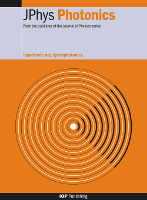
Journal of Physics-Photonics
Pioneering Research at the Intersection of Light and ScienceJournal of Physics-Photonics, published by IOP Publishing Ltd in the United Kingdom, is an esteemed Open Access journal that has been at the forefront of research in the field of photonics since its inception in 2018. With an impressive portfolio, the journal has achieved Q1 ranking in 2023 across multiple disciplines, including Atomic and Molecular Physics, Electrical and Electronic Engineering, and Electronic, Optical, and Magnetic Materials. This positions it among the leading journals in these areas, reflecting its significant influence and contribution to advancing knowledge and innovation. The journal aims to disseminate high-quality research findings that encompass a wide range of topics in photonics, promoting interdisciplinary approach that fosters collaboration among researchers, professionals, and students. With its commitment to open access, Journal of Physics-Photonics ensures that groundbreaking research is accessible to all, empowering a global audience to engage with and benefit from the latest advancements in photonic technologies.
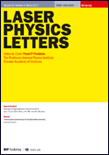
LASER PHYSICS LETTERS
Navigating the Frontiers of Laser PhysicsLASER PHYSICS LETTERS is a prestigious peer-reviewed journal published by IOP Publishing Ltd in the United Kingdom, focusing on the burgeoning field of laser physics and its applications. With an ISSN of 1612-2011 and an E-ISSN of 1612-202X, this journal stands at the intersection of innovative research and practical applications, addressing diverse topics within the realms of Instrumentation and Physics and Astronomy. Recognized for its impactful contributions, it boasts a ranking within the Q3 quartile for both relevant categories as of 2023, reflecting its steady rise and commitment to advancing knowledge in the area. Researchers and practitioners are encouraged to explore its content and contribute to the ongoing discourse that shapes the future of laser technologies. While LASER PHYSICS LETTERS does not currently offer open access options, its rigorous selection criteria ensure that published work is of the highest quality, positioning it as a vital resource for anyone engaged in laser science and engineering.

Photonics, an esteemed journal published by MDPI, is a leading platform for researchers in the fields of atomic and molecular physics, optics, and instrumentation. Since its inception in 2014, the journal has fostered open access to cutting-edge research, facilitating knowledge dissemination in these dynamic disciplines. With its Q2 ranking in the 2023 Scopus metrics for various categories, including radiology, nuclear medicine, and imaging, Photonics represents a crucial academic resource for professionals and students seeking to advance their understanding and expertise. Located in Basel, Switzerland, the journal plays a pivotal role in bridging theoretical and practical approaches to photonic technologies. Researchers are encouraged to contribute their findings, thereby enriching the journal’s impact and relevance in the global scientific community through collaboration and innovation.
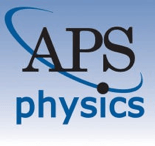
PHYSICAL REVIEW A
Elevating Understanding of Quantum PhenomenaPHYSICAL REVIEW A, published by the American Physical Society, is a leading journal in the field of Atomic and Molecular Physics and Optics, boasting a Q1 category ranking in its area for 2023. With an ISSN of 2469-9926 and an E-ISSN of 2469-9934, this journal plays a pivotal role in disseminating high-quality research findings, theories, and methodologies that shape current understanding and advancements in the discipline. Although not an open-access journal, it remains highly accessible to professionals and academia through institutional subscriptions. The journal's impactful contributions are evident from its Scopus rank of #70 out of 224 in the field, placing it in the 68th percentile for scholarly impact. As a hub of innovative research and a vital resource for both students and seasoned researchers alike, PHYSICAL REVIEW A remains essential for those seeking to stay abreast of breakthroughs in atomic and molecular studies, as well as optics and photonics.
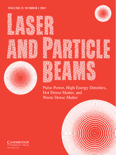
LASER AND PARTICLE BEAMS
Illuminating Innovations in Physics and EngineeringLASER AND PARTICLE BEAMS is a distinguished peer-reviewed journal published by Hindawi Ltd, specifically focusing on the fields of atomic and molecular physics, optics, condensed matter physics, and electrical and electronic engineering. With its commitment to advancing knowledge in these areas, the journal has transitioned to an Open Access model since 2021, ensuring that research findings are readily accessible to the global scientific community. Covering an extensive publication history from 1983 to 2023, it serves as an important platform for researchers, professionals, and students interested in the latest developments and applications of laser technologies and particle beam methodologies. Although currently categorized in Q4 for two of its areas and Q3 for electrical engineering in the 2023 base metrics, LASER AND PARTICLE BEAMS is positioned to foster innovative research and discussions within the laboratory and applied settings, contributing significantly to advancements in its respective disciplines. The journal encourages contributions that push the boundaries of knowledge and seeks to attract a diverse array of submissions to enhance its impact in the scientific community.
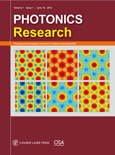
Photonics Research
Advancing Knowledge in Light and MaterialsPhotonics Research, published by Chinese Laser Press, is a premier international journal that aims to disseminate cutting-edge research and advancements in the field of photonics, encompassing areas such as atomic and molecular physics, optics, and materials science. Since its inception in 2013, this journal has established itself as a vital resource for academics and professionals, reflected in its impressive Q1 rankings in both Atomic and Molecular Physics, and Optics (15/224) and Electronic, Optical and Magnetic Materials (26/284) as per Scopus, underscoring its influence within the scientific community. With substantial contributions to the field, Photonics Research continues to foster innovation and collaboration among researchers, serving as an essential platform for the publication of high-quality studies that push the boundaries of knowledge. The journal operates on an open-access model, ensuring that research is readily available to a global audience, thereby enhancing its accessibility and impact. Whether you are a researcher, student, or professional, engaging with this journal offers a significant opportunity to stay at the forefront of photonic technologies and ideas.

Science China-Physics Mechanics & Astronomy
Shaping the Future of Physics and Astronomy ResearchScience China-Physics Mechanics & Astronomy, published by SCIENCE PRESS, stands as a prestigious journal within the Physics and Astronomy domain, particularly recognized for its contributions to the understanding of fundamental and applied physics. With an exhilarating Q1 ranking in the 2023 category and earning a remarkable scopus rank of #21 out of 243, the journal demonstrates its significant impact, being positioned in the 91st percentile of its field. Operating under an Open Access model, it facilitates the broad dissemination of high-quality research, ensuring accessibility for researchers, professionals, and students worldwide. Its scope covers a variety of essential topics in physics and astronomy, promoting a comprehensive understanding of the latest advancements from 2010 through 2024. The journal is a vital resource for anyone aiming to stay at the forefront of research in these dynamic fields, with its prominent address located in Beijing, China, symbolizing its global influence.

Communications Physics
Bridging gaps with groundbreaking findings.Communications Physics is a premier open access journal published by Nature Portfolio, dedicated to disseminating high-quality research in the field of Physics and Astronomy. Since its inception in 2018, the journal has rapidly established itself as a vital platform for innovative scientific communication, boasting an impressive Impact Factor and achieving Q1 status in the 2023 category of Physics and Astronomy (miscellaneous). With a Scopus rank of #31 out of 243, placing it within the 87th percentile, Communications Physics attracts a global audience of researchers, professionals, and students eager to engage with cutting-edge findings. The journal supports open access, ensuring that research is freely available to the public, which enhances its visibility and encourages broader discussions within the scientific community. Located in Berlin, Germany, Communications Physics aims to bridge the gap between various disciplines within physics, fostering interdisciplinary collaboration and inspiring future research endeavors.
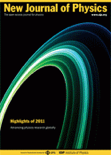
NEW JOURNAL OF PHYSICS
Unveiling the universe, one discovery at a time.NEW JOURNAL OF PHYSICS, published by IOP Publishing Ltd, is a prestigious open-access journal that has been at the forefront of the physics community since its inception in 1998. With an impact factor that places it in the Q1 category of Physics and Astronomy (miscellaneous) and a commendable ranking of #49 out of 243 in the general physics and astronomy category according to Scopus, this journal is recognized for its significant contribution to advancing research in the field. The journal caters to a broad scope of topics, providing a platform for the dissemination of cutting-edge research findings and innovative theoretical explorations. Operating from the United Kingdom, it offers a truly international perspective, making its contents accessible and impactful to a global audience. With robust open-access options, the NEW JOURNAL OF PHYSICS ensures that research findings are freely available, promoting collaboration and knowledge sharing among researchers, professionals, and students alike. This commitment to accessibility, combined with its high-quality content, makes it an essential resource for anyone engaged in the physics community.

OSA Continuum
Pioneering Insights in Optical and Material SciencesOSA Continuum, published by the Optica Publishing Group, is a distinguished open access journal dedicated to advancing research in the realms of Atomic and Molecular Physics, Optics, and Electronic and Electrical Engineering. Since its inception in 2018, this journal has rapidly positioned itself as a significant platform for disseminating cutting-edge findings, achieving impressive Scopus rankings with a 61st percentile in Electrical and Electronic Engineering and 57th in Atomic and Molecular Physics. Based in the United States, the journal not only promotes scholarly dialogue among researchers and professionals but also plays a crucial role in bridging theoretical advances with practical applications in optical and material sciences. Its open access format ensures broader visibility and accessibility of research outputs, fostering innovation and collaboration across disciplines. With its ongoing commitment to excellence, OSA Continuum is crucial for anyone involved in these dynamic fields.